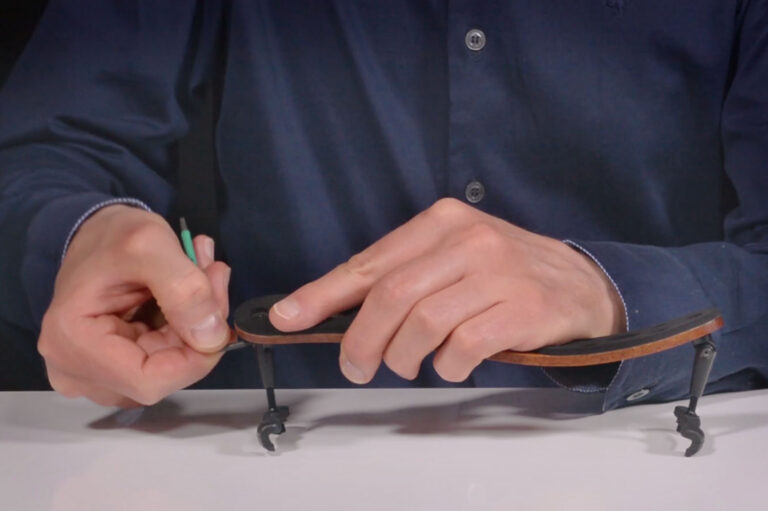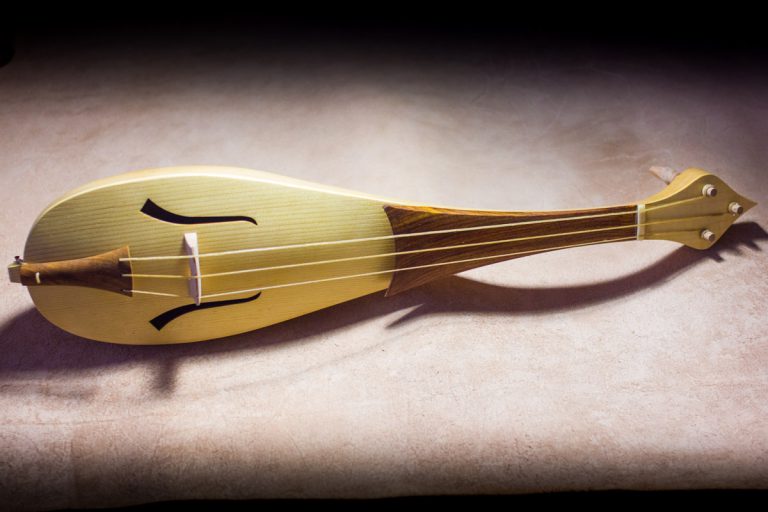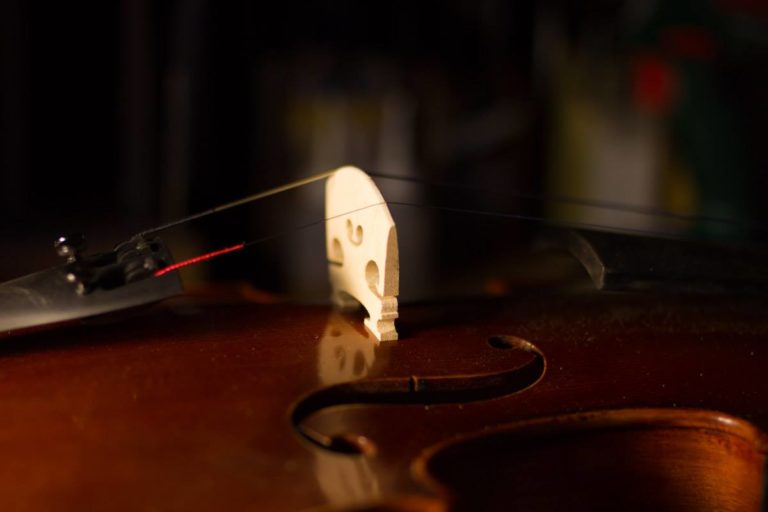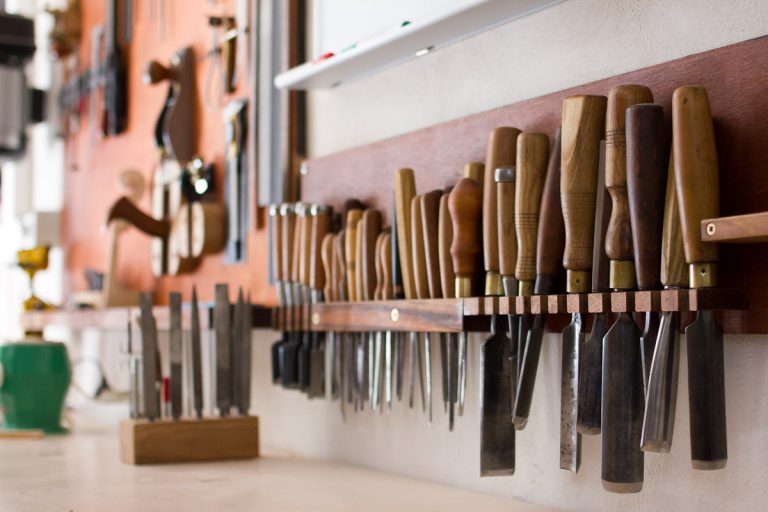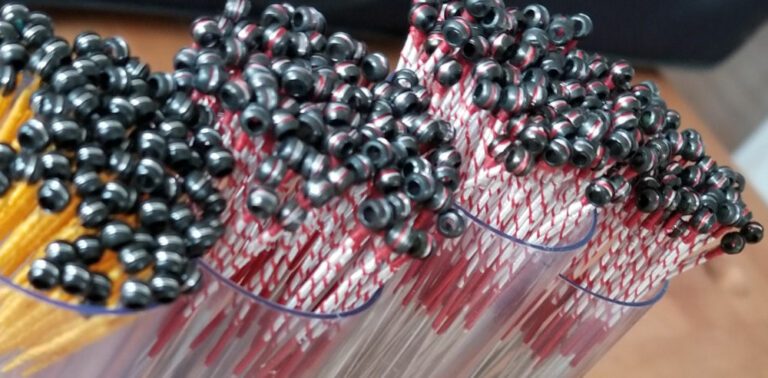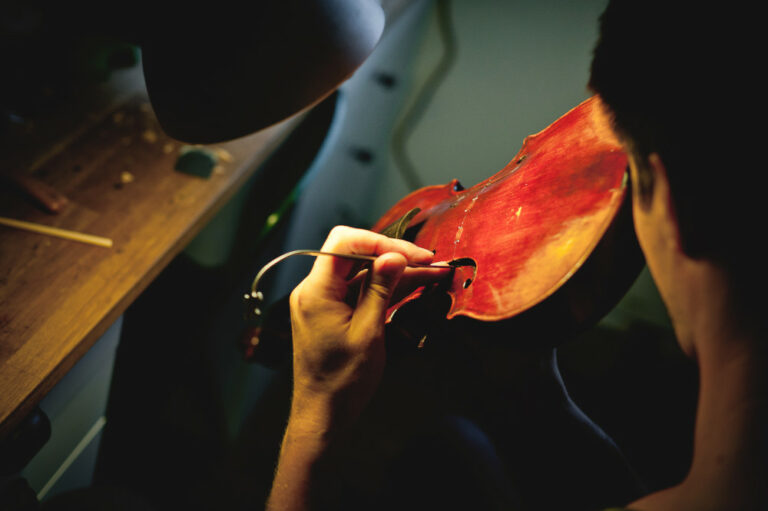In today's article, we'll be talking about violin and viola support. Indeed, modern playing techniques require some accessories to free the musician. This not only makes for greater playing comfort, but also unbridled virtuosity. So, we'll take a rather global approach to the subject of "how to choose a shoulder rest and chin rest", setting out a framework and a problem before providing some answers. This document is based on the study carried out by Emanuela Maria LACRARU, which was then translated and compiled with the invaluable help of my apprentice Oriane BARLOY. I hope all this will help you find concrete solutions.
SUPPORTING YOUR INSTRUMENT IN A BODY-FRIENDLY MANNER
A study to raise awareness of the use of violin and viola accessories, and their impact on the musician's physical health
by Emanuela Maria Lacraru, Louisiana State University and Agricultural and Mechanical College
How to choose shoulder and chin pads: introduction
The aim of this study is to raise awareness of the physical reality of musical performance. Just like an athlete, a musician must maintain a healthy relationship with his or her body. In addition, he or she must be able to identify aches and pains without taking them for granted while playing. Many musicians take these pains or discomforts for granted, and only stop at the moment of accident. That's why this study is presented as a preventive piece of writing, focusing on instrument support, in particular through the use of two accessories: the shoulder rest and the chin rest.
The violin and viola are instruments that need to be "fitted out" if they are to be playable. To hold them against the body without slipping, and to "fill the gap" between you and the instrument, the shoulder and chin rests are invaluable accessories. If correctly chosen and adjusted, they can help reduce muscular tension.
The question of tension and pain must be raised at the very beginning of learning the violin or viola; the motto of this thesis, as the author herself points out, is "prevention is better than cure". In this approach, involving teachers and professionals in the awareness-raising process is essential, to get rid of bad postures right from the start of learning and support the student in his choice of accessories.
The support for the instrument (shoulder and chin rests) is strictly individual. That's why it has to be personalized, respecting each person's body and natural disposition.
Historical overview
Violinists and violists have not always used shoulder rests and chin rests; in fact, their invention is relatively recent in relation to the overall history of the violin.
In the 16th century, the violin was not held directly under the chin, but rather at chest level, as the repertoire of the time did not require great mobility of the left hand.
In the 17th century, the violin was brought closer to the shoulder, with the left arm glued to the side and the scroll pointing downwards.
A treatise from 1677 mentions for the first time in writing the need to use the chin to hold the instrument.
In 1756, a second treatise by Leopold Mozart placed the chin on the right, towards the E string.
Finally, in 1761, L'Abbé le fils placed the chin on the left, as we do today.
The invention of the chin strap is attributed to Louis Spohr, in 1820. Baillot points out that 19th-century men wore large, thick coats that acted as shoulder pads, which may explain their later invention.
In the 20th century, there was renewed debate about the usefulness or otherwise of shoulder and chin straps, which were rejected by some for various reasons explained below.
The Alexander Technique
Developed by Frederick Matthias Alexander (1869-1955), this technique is a method of "psychophysical re-education" that can be applied to music. According to Alexander, body and mind are inseparable and constitute what he calls the Self. The idea is not to concentrate on a single part of the body that is under tension, but to consider the whole body's overall posture (although the term "posture" is not appreciated).
In this sense, the musician must strive to rediscover a balance of body and mind, a global coordination of thoughts and movements, all converging towards the same goal.
For violin and viola, it's all about relaxing the neck, freeing the arm and swinging the head. In other words, abolish static poses. Tension in the arm, in particular, leads to general tension in the neck. All this will be developed further in the section "Positioning your instrument and choosing the right accessories".
This technique goes hand in hand with a trend highlighted by ethnographer Lothaire Mabru. In fact, until the 20th century, the musician's body was denied, having to endure pain in silence. Recently, however, a new pedagogy has emerged that is more attuned to the body.
How to choose shoulder and chin pads: Defining the problem
The "no pain, no gain" mentality has led musicians to regard pain as normal. What's more, the source of the pain is often misidentified: a backache may be due, for example, to an incorrect chin position. It's important to understand that the chinrest is more than just an aesthetic feature whose material or color harmonizes with the rest of the instrument. Along with the shoulder rest, it is a support accessory that must be carefully chosen to help reduce playing tension.
The author of this study insists that teachers should advise accessories based on the individual, not on their own experience. Likewise, the "generic" chinrest automatically supplied with the instrument should not be taken for granted. Most sellers don't take this parameter into account, and on the other hand, the musician spontaneously accepts this accessory as the right or only one available. In this preventive process, then, teacher and dealer are the two key players.
The following is intended to help you understand the main issues involved in choosing the right shoulder and chin pads for each individual morphology.
Positioning your instrument correctly, choosing the right accessories
Injury risks often ignored
Having unsuitable accessories, such as a chinrest that's too small or badly placed, or a shoulder rest that's too high, leads to poor posture that can have serious consequences. The head constantly nods or is tilted too far, the jaw presses against the instrument, the neck stretches and tightens...
All these bad habits and poor positioning are a source of tension and pain: strains, muscle spasms, various hand and wrist problems, TMDs (temporomandibular joint disorders), headaches, neck and jaw tension, chronic left trapezius pain... The list is endless! The most sensitive area is the neck, in continuity with the spinal column - the pivot of the body - and the slightest tension in the neck can produce a chain reaction in all the muscles involved in playing the violin or viola.
The source of all problems
Generally speaking, these problems stem from an unsuitable chin and/or shoulder rest, causing the musician to contort or tense up against the instrument. The playing position does not conform to our "natural anatomical posture".
Why is this question so important?
These observations lead us to question the importance of choosing these accessories, which are all too often chosen by default. Without realizing how essential they are to the proper maintenance of the instrument.
This is particularly true for beginners, who naturally tend to look at their left hand while playing. This causes an exaggerated torsion of the head, which should lean forward and remain in line with the body rather than being pressed to the side. It is therefore of the utmost importance to control the left hand by touch and not by looking at it.
Dynamically support the instrument
There are four "bodily sources of support" for the violin : the collarbone, the left arm and hand, and the weight of the head on the instrument. To avoid remaining in a static posture, many researchers recommend varying support between these different sources. This is the approach taken by Lieberman, who emphasizes the "dynamic relationship" that the musician must maintain with his or her instrument. This means alternating support points - jaw, shoulder, hand - while playing. This distribution of the violin's support is of course adapted to the repertoire and its physical implications.
The important thing, therefore, is to maintain sufficient freedom of movement and to remain flexible through this alternating and dynamic distribution of support points, without turning the head too far towards the strings, while placing the jaw rather than the chin itself on the chinrest. In short, use balance rather than force!
Finding the right position for your instrument
This is what needs to be determined first, according to each individual's morphology; only then can you choose your supports - chin and shoulder straps.
The positioning of the instrument depends on four parameters:
- The vertical plane, i.e. the height of the instrument. It must ensure comfortable movement of the right hand, without the shoulder rising too high.
- Horizontal plane: should the violin be facing the musician or slightly to the left?
- The angle of the scroll: where should it point? On the whole, we advise the musician to keep the neck line parallel to the ground. At the very least, it's preferable for it to point upwards rather than downwards.
- The angle of the violin, which should be tilted slightly to the right, to allow easy access to the strings.
The right compromise
Lieberman suggests finding a compromise posture that is comfortable for both left and right arms, without straining the shoulders or creating tension. Depending on the repertoire, its technique and variable difficulty, it is of course possible to change this positioning and call on different parts of the body, to adapt to each piece.
How to choose shoulder pads and chin straps: Customize your shoulder pad
What's a shoulder pad for?
The shoulder rest is the accessory that comes between the violin and the shoulder. In reality, as we shall see, it is more the clavicle. It stabilizes the violin in a comfortable playing position, allows the violin to be tilted to the right, and keeps the fingerboard horizontal.
Two different categories
There are two types of shoulder pads:
- those made of soft material (cushion, fabric, foam), which have the advantage of not stiffening the position of the instrument, but the disadvantage of absorbing some sound
- those made of rigid material, whose height and width can be adjusted by means of a removable screw. This is the most commonly used type of shoulder rest.
Sources recommending the use of shoulder pads
Medical experts often recommend the use of shoulder pads, as they help reduce muscular tension, especially for musicians with broad shoulders and necks. The case of musicians with long necks comes up regularly: the shoulder support is an effective way of raising the instrument and avoiding bending over it.
Lieberman makes a few suggestions:
- Flat models from the Kun, Viva Wolf Forte Secundo and Bon Musica brands for people with small necks;
- Wolf Forte Secundo and Viva, for narrow shoulders;
- Bon Musica for long necks.
Usually, the screw is longer on the chest side, and smaller on the shoulder side. But using a longer screw for the shoulder would prevent the head from tilting sideways.
Does the shoulder support really need to raise the instrument?
In fact, many sources believe that the shoulder pad should not be used to enhance the violin. This role should instead be assigned to the chin rest. According to Greenberg, a leading authority in this field, the shoulder rest fulfills two functions: it stabilizes the instrument and prevents it from slipping, and it fills the space between you and your instrument - between the back of the violin and the collarbone.
Choose according to your body type
Researcher Dinwiddie wanted to create a standardized support based on knowledge of each individual's body and the principles of the Alexander technique. He suggested models based on a comparative study to offer something for every morphology:
- The Bon Musica, for musicians with slender builds, square shoulders, long necks and narrow jaws.
- La Bon Musica, also for tall people with long arms, broad shoulders and jaws
- La Viva, for small necks, sloping shoulders and medium jaws
- The Wolf Forte Secundo, coupled with a fairly high chinstrap, which would be best suited to musicians with small shoulders and long necks
Each of these models requires slight adjustments to suit the user.
Sources advising against the use of shoulder pads
Some, on the other hand, reject the shoulder and chin support accessories, for a variety of reasons:
- For aesthetic reasons, if you find that these accessories detract from the beauty of the violin itself and weigh down its appearance, functioning as unsightly "appendages
- Because it affects the unity and harmony between body and instrument (the English concept of " oneness"). The musician may need direct contact between self and violin: this is Anne Sophie Mutter's theory, which echoes the advocates of respect for the Baroque tradition and the need to feel, without interference, one's instrument.
- Because it hinders the shoulder, which loses its mobility. Trying to adapt to the shape of the shoulder support can cause the shoulder to tense up, leading to pain. Hence the obvious advantage of adapting the shoulder pad to the shoulder, rather than the other way round. According to D. Hoppenot, the shoulder support could interfere with the natural balance of the different parts of the body, resulting in inertia on the left side of the body.
How to choose shoulder pads and chin straps: Customize your chin strap
The different types of chinstrap
A chinrest generally consists of two parts: the upper part, made of wood or plastic, on which the musician's jaw rests; and the lower part, a metal fastener that secures the chinrest to the instrument.
Liebermann suggests a technique for finding the optimal placement of the chinrest: the musician simply turns and nods his or her head, and the chinrest should be right there, at the level of the jaw. Optimally, the jaw should rest in the center of the chinrest when the musician turns and nods his or her head.
There are three types of chinrest: one with a clip on the left; one with a central clip and headrest on the left; and one with a clip and headrest in the center.
Flat or curved chinstrap?
The shape of the chinstrap has different effects. For example, you may prefer :
- The flat shape for greater head mobility and freedom of movement, as the jaw is not coiled in the chinstrap
- The curved shape for strong, pronounced jaws
Raising the chin strap
If the musician has a long neck, it' s advisable not to raise the shoulder pad, but to turn towards the chin strap. This can be done by adding a piece of cork under the clip to raise it, for example. Another very effective option is to use a GelRestor by adding moleskin or foam...
In all sources, use of the centered chinstrap is strongly recommended. It seems to cause less head torsion and neck tension. The head is straighter, the jaw less pressed against the attachment. According to some opinions, the centered chinstrap is more suitable for small morphologies with short arms.
Allergy and irritation risks
It's also very important to regularly clean the chinrest, which is in constant contact with the skin. In addition, certain materials can irritate the skin and provoke allergies, especially with ebony or rosewood. It is therefore sometimes preferable to use plastic, or to place a protective cover over it for sensitive skin. For this reason, the Wittner brand is very popular with its hypoallergenic chinstraps.
On the other hand, if allergic reactions are identified due to nickel, it is possible to opt for steel, aluminum or titanium.
How to choose a shoulder and chin support: Conclusion
Adopting the right posture and personalizing your support accessories - shoulder and chin straps - is essential for playing in the best possible conditions. The sources and opinions are many and varied: because there is no miracle solution or universal answer.
In fact, the diversity of opinions shows that it's up to everyone to take the time to try out different models. Each musician must make up his or her own mind to ensure an optimum playing position. Ideally, of course, it would be very interesting to be able to have your chin and shoulder pads custom-made. Luthier Peter Purich has already begun experimenting with this in Montreal. But for the moment, this principle is far from being democratized. That's why it's simpler and less costly to take the time to fine-tune the models available.
Take the time to do so - it's a valuable investment in your health and the quality of your game!

